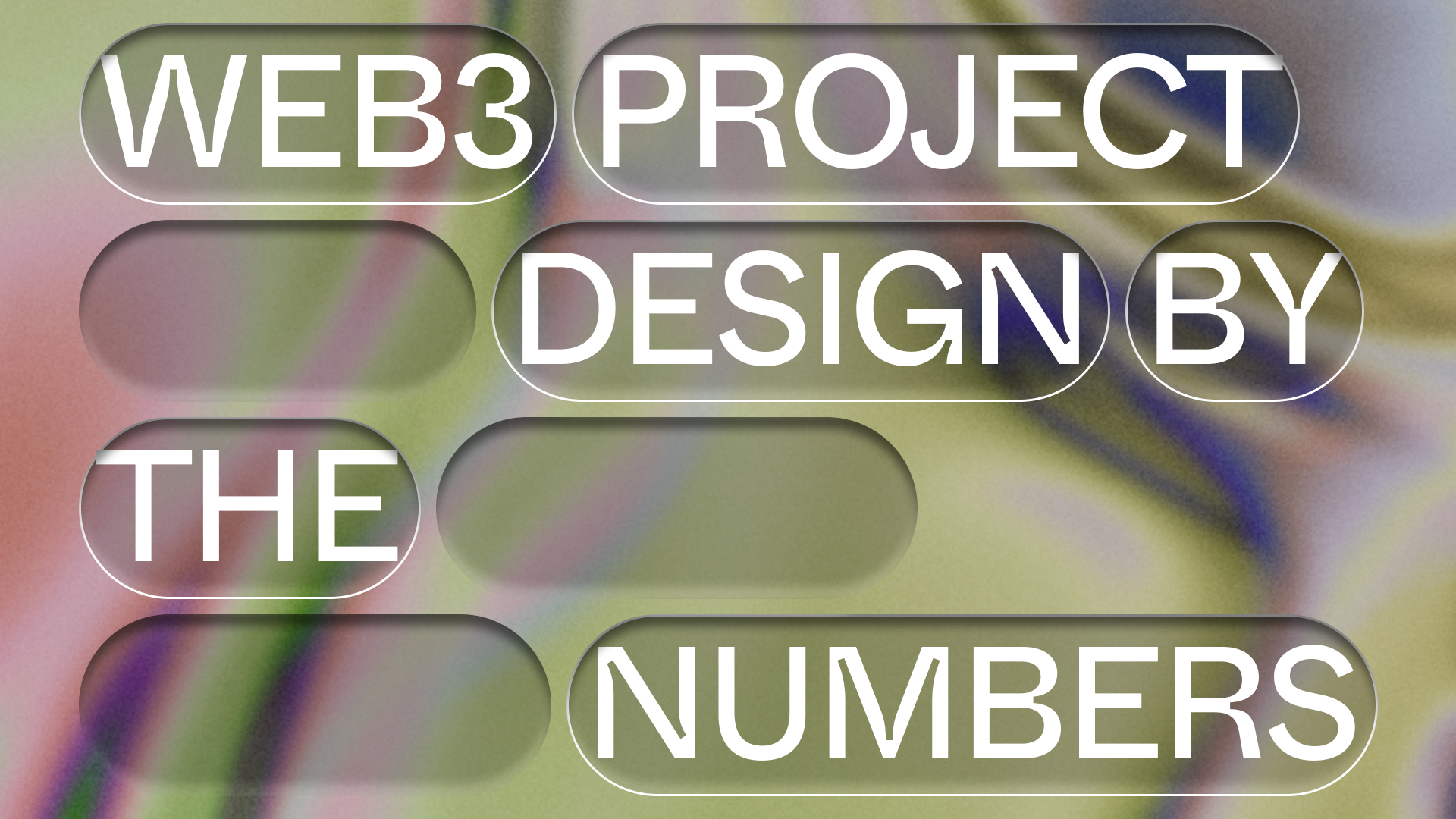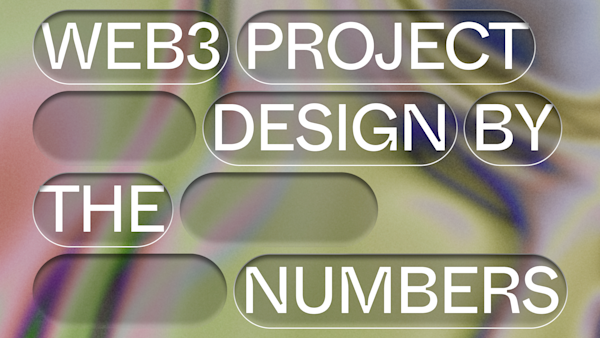The art and data science of NFT storytelling.


Over the course of the past year, we’ve seen metaverses emerge, worlds surface, generative stories unfurl and unfold. Fundamentally, we want to build things that people find themselves in. And maybe even get lost in: whether it’s Gotham City’s underground, or a raid gone off the rails.
To do that requires listening. Crowdsourced information and creative development play a key role in NFT experience design. Palm NFT Studio’s Caitlin Burns and Andrew Damon break down web3 story development: from the back office and the writer’s room to out there in the real world.
People tend to underestimate how much writing and experience design is actually just good research. Can you talk about the team’s approach to story development?
Caitlin Burns: Every story starts with research. If you’re not looking at the data, if you’re not understanding how people are responding to what you’re doing, or diving into the history and cultural context behind a project, you’re never going to be able to build an experience that resonates with your audience. You have to understand where you’re starting from, and what the conditions are. And that always gives you an entry point, an inspiration point for storyline development.
Andrew Damon: I’m one of the first full-time Data Analysts in web3. My team covers everything from analytics to drop structure and strategy for brands building web3 products and community integrations. Data plays a key role in how we approach story; how we build and design new characters.
What are you looking at when you start developing a project? What’s the difference between web2 data and web3 data?
Andrew: Web3 data is a relatively new sector, so there aren’t always a ton of comparisons that you can find or make for large brands and large IP entering the space. In many cases, we’re looking at web2, or historical data. For example, if it’s a movie, what did theatrical look like? How did people respond to this character? How were events and marketing milestones received?
Caitlin: Web2 was based on observed user behaviors: using those observed behaviors to determine how audiences wanted to participate and engage with projects. Those benchmarks, those heuristics, are critical for onboarding new users.
Andrew: But with web3, we can actually explore what new types of interactions might mean for narrative development. For example, if we’re looking at a project that’s using a really creative burning or staking mechanic as part of the storyline, we can learn from a deeper form of audience co-creation. And critically: that goes back into how we build experiences. With this information, with these new types of interactions, you can start getting to a drop that’s an experience, something that’s fully connected and resonant.
Caitlin: In that way, each digital collectible becomes like a pixel in the bigger experience. We learn from what people are engaging with, in real-time. We can learn from what other projects are trying: the experiments, tools, and mechanics that have gained community traction. What we’re looking for is always: how are people engaging?
A lot of what I'm trying to bring to the table is about hearing from fans, and working with them. How do we activate as much of human cognition, analysis and interpretation as we can?
What signals a healthy project?
Andrew: It’s incredibly noisy out there. Looking at sentiment analysis is wrong 90% of the time. You have to really listen, and investigate. Is there more than one source of truth to the data? Web3 makes traditional social listening really challenging, because you’re getting mixed into broader marketplace news, rumors, and economies.
At the same time, we get almost instant feedback in this space on how we’re doing, whether it’s Twitter or Discord. User generated content is one of the hardest things for brands to get right. But it’s the hallmark of a healthy, vibrant community, particularly in web3. It’s humbling to see the creators in this community; to watch what they make, to know that our web3 experience has made its way into their homes and schedules.
Caitlin: That’s what fandom means to me. When people start doing fan art, it’s the single strongest barometer of whether or not a storyworld’s fandom is healthy. And the reality is, for me, I’ve never been able to separate out this into an online or offline thing. There’s no dividing line. It’s so tied in. Stories become the basis for our real relationships.
And when we’re able to provide these different touchpoints that allow people to get excited about events together, share together, and play together, it’s one of my favorite things. One of the things that I’m most excited about with web3 is the opportunity to provide attribution and royalties for co-creative behaviors. But what we can do, broadly, is allow more people to participate and shape a story world: to explore it together.
What do you see as the power of crowdsourced information when it comes to story?
Andrew: Storytelling NFTs have become a meme. But the creative work in storytelling is what actually fuels web3. Storytelling is what drives the entire experience. From start to finish, it’s about how you activate the audience.
You start with a teaser about what’s coming. You start revealing the art; the background and context behind specific traits. And these traits can be really expansive; we’re seeing these carry over across projects. And this is all before your collection drops. My belief is that what’s really driving everything in web3 is that people want to be part of something. They want to have a voice in something they traditionally don’t get to have a voice in. It really opens up the world to you being a creator. As a collector, you have a stake in the world.
Caitlin: People want to be moved. They want to share exciting things together: whether that’s a story, or an in-person experience. It doesn’t surprise me at all that story NFTs are having a moment. This is a really clear way to engage and build fan communities over time; to create new lines of business, to really revolutionize the way digital narratives work.
Over the past few months, crowdsourced info has played a key role in shaping Batman canon, with cowl holders voting on the first (and now second) chapter of Batman: The Legacy Cowl. What can you share about the upcoming vote?
Caitlin: Being able to work on a new creative process with DC for Batman: The Legacy Cowl has been super exciting. This type of realtime co-creation is really empowered by web3. Things like social media polls have existed for a very long time, but now we have the ability to have a much stronger, direct relationship between DC’s editorial teams and fans.
Which vote result from Chapter 1 surprised you the most?
Caitlin: For me, one of the most fun parts was seeing what the DC editorial team was coming up with for each vote; the different ways they were experimenting with the production process. I think the vote that I loved the most for Chapter 1 was the cover sketch. If I had to make that decision on my own, I’d be wracking my brain for weeks, because the art’s so incredible. And I really loved hearing how everyone debated the different elements of each one.
Andrew Damon: One of the vote results that surprised me the most was what the Batmobile was going to look like. It was interesting because it was so one-sided. And typically, the vehicle is something that people are really tied to. There’s nostalgia there. What’s really interesting to me from a collector and voter perspective is that what you have access to is really the process. You get to shape and own the concept; all of the possibilities, and not just the finished product.







